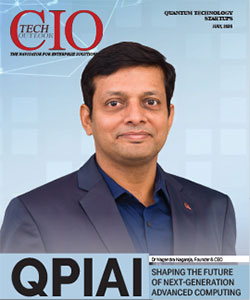How important is Privacy-enhancing computation in the digital era
Janifha Evangeline | Wednesday, 08 December 2021, 10:01 IST

Privacy-enhancing computation technologies support privacy and protect data from violations and hacker attacks. According to a recent report by Gartner, fifty percent of large enterprises will implement privacy-enhancing computation for processing data in untrusted environments as well as multiparty data analytics use cases, by 2025.
The need for implementing Privacy-enhancing computation technology
Preventing any possible risk to the privacy of the consumers of an organization is the first and foremost reason for the need for Privacy-enhancing computation. Secondly, it is needed for an enterprise which is lacking a well-established protection system data without any answerability and this exposes the sensitive information of any enterprise’s clients, which poses a threat to users’ privacy. And this ultimately affects their trust as well as loyalty in the long run. Therefore, it is highly critical to rule out the possibilities of similar major issues that include human dignity violations, identity crises that may result after a security breach & misinterpretation. Thus, it is a dependable method that helps in sharing data while assuring the customers and other businesses.
Business benefits of Privacy-enhancing computation implementation
- Prevents possible harm
- avoids chances of misrepresentation
- helps tackle undetermined circumstances
- and safeguards against human dignity violation
Types of Privacy-enhancing computation technologies
With the maturing of privacy compliances coupled with widespread regulations, the small, as well as large enterprises, should protect the data in use. This type of security comes in mainly 3 forms, according to Gartner. The first one involves offering a trusted environment where data can be processed/analyzed through 3rd party & hardware-trusted execution environments.
In type-two, the privacy-enhancing computation concerns decentralized processing & analytics through either federated or privacy-aware ML. The final form concerns computation which transforms data & algorithms before processing or analyzing which includes homomorphic encryption, zero-knowledge proof & secure multiparty computation.
Homomorphic encryption implements cryptographic techniques for enabling 3rd parties to process encrypted data & return the result in encrypted form to the data owner. At the same time, it ensures that no knowledge about the data or the outcome is provided. In practice, such a type of encryption does not suit business implementations.
Homomorphic Encryption
This technology can be identified as the most secure option in Privacy Enhancing Computation, although the name looks quite complicated it has a simple meaning and it allows data to be processed however data will remain confidential. For instance, let us say that someone wants to perform mathematical operations on a particular data, then implementing this method lets users process the calculation on ciphertext instead of real data, which means the user will never know the actual data because he/she is applying functions on the encrypted data.
Secure multiparty computation
To understand the next technology which is secure multiparty computation, let us take an example and analyze it. Let us assume that a medical center wants to check one of the patient’s DNA with the DNA records of cancer patients and in this case, DNA is highly sensitive data. Although the medical center can determine whether the patient has a higher risk of having cancer such type of data should never be revealed to any 3rd party since it can be misused.
In such kinds of situations, Secure Multiparty computation protocols are highly useful and valuable as well. The reason is that by using this protocol they can find out the most suitable category of cancer the patient’s DNA is similar to and it only reveals the most suitable category. In simple words, Secure Multipart Computation allows multiple parties to operate on data together but ensures that their own individual inputs are kept secure.
Differential privacy
The next kind of technology is Differential Privacy, which is a type of algorithm that analyzes and computes statistics on a data set. After this process, it will provide a general dataset, while describing the patterns. However, it will not reveal information about individuals.
Trusted Execution Environments
Among the other privacy-enhancing computation technologies, this technology is more likely to be the least secure one. This is a secure part of the main processor where data is stored, processed, and protected securely and is largely utilized in modern digital devices that include smartphones, tablets, and many others.
Conclusion
In today’s modern era/digital world, privacy is of great concern. This is specifically important when we surf in cyberspace as we often face cyber threats and day by day the number of cybercrimes and data breaches is surging rapidly. Therefore, this privacy-enhancing concept is highly important.




